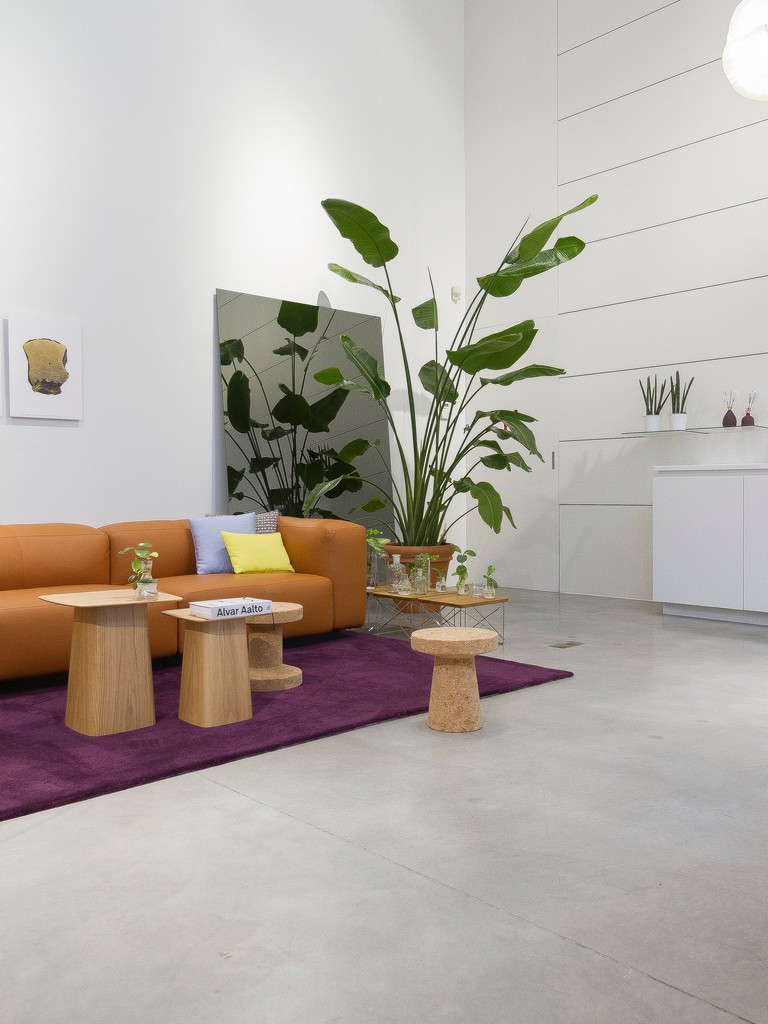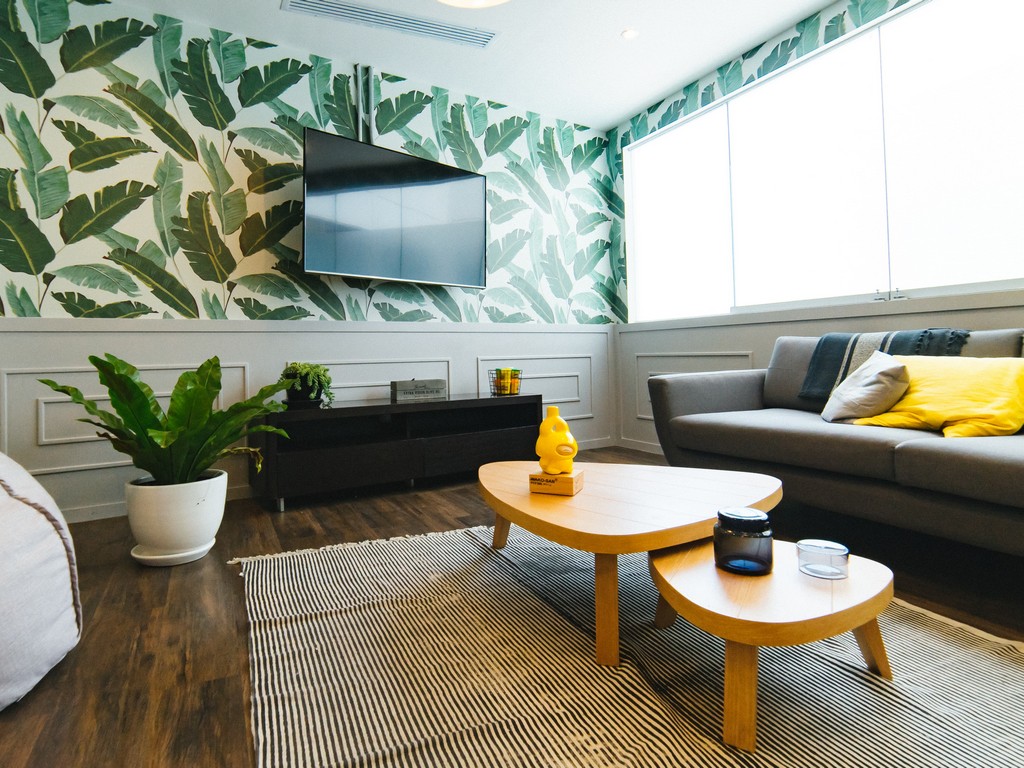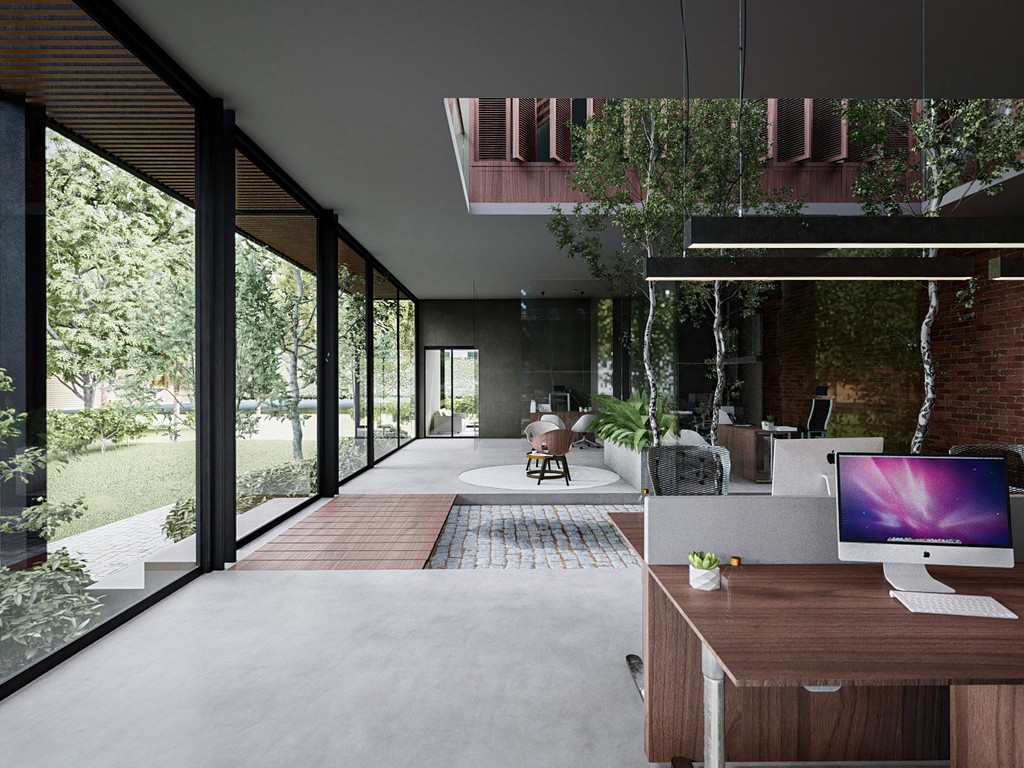Biophilic Design: Help Society Connect with Nature via Interior Design
25/09/2023 2023-09-25 15:56Biophilic Design: Help Society Connect with Nature via Interior Design
Imagine a place that makes you feel relaxed, calm, and happy. For the majority of us, this place is either in the mountains or on a beach, under a beautiful sky or surrounded by trees and vegetation. Being close to nature makes us feel calm, and yet we spend nearly 93% of our lives indoors. But what if there was a way to bring nature indoors and into our daily lives? The biophilic interior design aims to do just that. Biophilic Design is a sustainable way to boost productivity and bring calm into everyday life.
If you are an aspiring interior designer who wants to add creativity to this harmony of society and nature, continue reading to learn more about how to incorporate biophilic design into everyday living spaces.
Understanding the Concept: What is Biophilic Design?
Before we dive into the concept of biophilic design, let us first understand what the term biophilia means. Biophilia is a concept that aims to increase our connection to our natural environment by incorporating the elements of nature in our indoor spaces. A biophilic design promotes harmony with nature by bringing it into our spaces via textures, colours, natural elements and ecologically conscious spatial designs.
In India, a biophilic designer works with environmentally conscious architects and clients to provide a space indoors that promotes productivity, health and well-being. They build spaces where the focus is on innate human desires to feel safe and among nature.
It is important to note that the biophilic design concept is not limited to residential living. It is also a great way to incorporate calmness in tense or crowded spaces like hospitals, schools and workplaces.
Biophilic Design Principles: Evolving Our Relationship with Nature
Biophilic designs make use of elements like air, light, vegetation and water to bring nature indoors. They can also use an indirect influence of nature-inspired colours, images, shapes and stimulations.
The following are some foundational biophilic design principles that you can incorporate into your projects:
Environmental Features
Surrounding oneself with vegetation and using natural characteristics of nature like sunlight, water features, and open areas for natural air ventilation are some of the most successful strategies to foster nature-human connection through design.
The presence of such natural elements boosts productivity as the calming environment reduces stress, prompts healing and improves mood.
Natural Processes and Patterns

The human brain reacts well to a varied sensory environment, especially responding to sound, touch, sight and smell. In interior design, when bringing nature inside your space, recreating the textures, colours and biophilic design patterns of nature helps foster calmness.
Good biophilic design examples in this regard are putting textural round stones on one part of the flooring to divide your room or having statement decor pieces that bring nature into your space.
Styling the space with a combination of several elements that complement each other in texture, colour, and size needs to be emphasised here. Do you want to know more about styling a space? You can check out the beginner’s interior styling tips!
Varying Shapes and Forms of Nature
A good biophilic designer knows how important shapes and structures are when it comes to designing a space. The natural environment reflects a great contradiction of shapes and colours. Therefore, using shapes and angles found in nature is another important aspect of biophilic design.
A wide range of complementary shapes and colours found in nature fuel our need for diversity. Our brain needs contrast to process and understand objects in front of us. Keeping that in mind, this biophilic architecture concept emphasises using ovals, columns, spirals, arches and botanical motifs in your space.
How to Become a Biophilic Designer?

If the idea of merging sustainability, nature and space design to create a utopia of wellness and productivity intrigues you, then you might want to explore the field of biophilic interior design. Your first step towards this goal must be to enrol in an accredited interior design program.
Enrolling in interior design courses in India requires a high level of dedication, spatial awareness, and an eye for design. You can get into an interior design program straight after your 12th grade and garner a strong foundation of interior design concepts.
In order to further specialise in biophilic design, you must possess an eye for introducing natural elements to any space and practise this style during your coursework. After completing an extensive interior design program, you can undertake various sustainability courses online and develop your portfolio simultaneously.
Career Opportunities After Completing an Interior Design Course
With the credentials you acquire in your education, you can work as a biophilic interior designer in several roles. Some of these roles are as mentioned below:
- Biophilic interior designer
- Biophilic interior decorator
- Biophilic space planner
- Sustainability educator in the field of interior design
- Materials expert
The field of biophilic interior design is an exciting venture that brings a lot of promise to lead a more attuned life to nature. As per the data by Ambitionbox, the yearly salary for an interior designer in India can go up to INR 6 lakhs per annum, with an average of 3 lakh rupees per year.
Wrapping up
Many Indian space owners in metro cities are looking to escape their daily monotony by bringing nature into their houses and workspaces. This is an exciting time to be an independent biophilic designer and help your clients lead a more sustainable and ethical lifestyle. A biophilic design helps promote a balanced way of living life which will only increase in demand as the digital era continues to grow. To capitalise on this opportunity, why not enrol in a dedicated 3-year Bachelor’s Degree in Interior Designing and Decoration from JD School of Design? This degree will provide you with a solid foundation in interior design and help you discover your personal style to become a successful biophilic interior designer.














